Flagstaff Region, Arizona
Flagstaff was a really pleasant surprise. We even liked the town itself, and we aren’t big on towns and cities. But the surrounding region was the real treat — really beautiful country, and very diverse as well.
After leaving Lake Powell, we drove a bit more than 120 miles south, and camped outside the city of Flagstaff, AZ. We were primarily there to attend the Overland Expo (more about that in a later post), but also interested in what the area had to offer. As it turned out, there is a ton of stuff to see and do, all within maybe 50 miles or less of the city. And yes, the Expo was marvelous — but that’s for a later post.
We picked a paved campground, Bonito, just outside the Sunset Crater National Monument. Being new to the area, and approaching an event-crowded weekend, we felt a little more relaxed with camp hosts on duty all day. Besides, after our recent two-day dust storm at Lake Powell, we were ready for just a bit more tidy camping for a little while. Bonito was just what the doctor ordered — clean, spacious, not too expensive ($12 for seniors). In addition, it was situated just outside the Sunset Crater Volcano National Monument.
Besides the friendly camp hosts, the first welcome we received was from these incredibly cute Eberts squirrels. They have the dangedest pointy ears we’d ever seen. (Actually, their ears are normal, it’s the tufts of fur that make the extended points.)
They were extremely tame, much more interested in chasing each other up and down the trees than worrying about us. The energy of these critters is simply astonishing: they would run up a 70-foot Ponderosa pine as fast as they would run down the same tree moments later. Chasing and scolding each other, the trip might be repeated two or three times, or taken to another tree. Dynamos.
I probably shot 50 photos on these little demons. Mostly out of frame or out of focus, they’re so damn fast. A wildlife photographer, I’m not. Don’t know how those Nat Geo guys do it.
TOURING the MONUMENT
One of the first things we did after making camp was take a drive around the National Monument and nearby areas. The Monument is not very large, only about two miles tall and three miles wide — but the only roads go well outside it (546 and 779). So we drove slowly, stopping often, and spent about three hours on our first foray.
We turned west on 546 and looked back to say “see you later” to the Sunset Crater (the Monument’s namesake).
As if the widespread dark black lava was not somber enough, the forest is littered with old dead snags from a forest fire 30 years ago. A lot of them are downed, but the ones still standing give a bleak look to areas of the landscape.
Winds in this part of Arizona are notoriously fierce, and there are many, many trees blown down. This one was over a foot in diameter. Interestingly, every single blow-down we saw was pointing north. Must have been a hell of a south wind that came through.
Not only old dead trees were affected either. This one was still green, a very new casualty — and totally blocking the road. (There was a way around it through the rocks and brush.)
Most of the distance was pretty decent volcanic-cinder roads, just a few humps and bumps here and there. Lots and lots of areas to camp, hike, or just chill out.
Pulling back onto US89 again for the return to camp, the San Francisco Peaks (north of Flagstaff) showed their handsomeness in the afternoon light.
We also did some hiking here and there, both in the forest around camp and along the lava-strewn trails off the access road. The lava in the area is almost exclusively A’a (ah-ah), the brittle, fragmented and broken stuff as opposed to pahoehoe, the ropy, fudgy-looking form. Here, the A’a is stupendously jagged and chaotic, more than I have ever seen anywhere.
Twisted, grotesque chunks of the stuff stick up at any and all angles. It looks ready to tumble down, but in fact it’s fixed and amazingly rigid. It’s also nearly impossible to walk across or climb over, because the surfaces are at every conceivable angle. Sharp and abrasive too, walking among this stuff would wipe out a pair of shoes in a week.
And everywhere (I mean EVERYWHERE) that there wasn’t lava, there was volcanic ash. Sometime fine like sand, but mostly like fine gravel. This region has over 300 cinder cones piled up by volcanic eruptions, and they’re all made of this stuff.
NAVAJO COUNTRY and GRAND FALLS
We saw a tiny little note on a map, “Grand Falls”, along a little-known tributary to the mighty Colorado, called “Little Colorado”. The Grand Falls are higher than Niagara, were located on Navajo land, were accessible only by 4WD road, and in May they’d be dry (the Little Colorado is seasonal). But when we found we didn’t need a permit or guide to go see them, off we went. We didn’t expect a lot of company on such an expedition, and in fact we saw only one vehicle once we left the pavement.
It’s a bit of a labyrinth to get there, so if you go, be good at navigation and map-reading. Basically, it’s off of Navajo-70, but there’s a little more to it.
Strictly speaking, it’s a two-wheel-drive road, but rough/washboarded in spots and, even in mid-May, wet here and there. We felt MUCH more comfortable having Ralph’s trusty 4WD to fall back on — but we didn’t need it.
Arriving at the Falls, we learned that they were formed by a lava intrusion into the original river channel.
Even with no water flowing across the steps, the Falls were pretty impressive.
There are several of these little observation platforms — but it’s still hard to get a good camera angle, because the formation is both wide and tall.
The on-going erosion is obvious in several places, such as the big white chip in the middle, and the large cleaved ledge at the right.
Another really interesting discovery, although not particularly related to the Falls — the sandstone erodes in layers (duh), and sometimes those eroded layers aren’t too easy to see. When I walked up to this cliff, I could NOT see the collapsed pieces (had to go around to one side to get this view). LESSON LEARNED: getting close to cliffs can get you on top of a collapsing piece of stone. Which is to say, killed.
On the way back to camp, we stopped off at some interesting sights in the Navajo Nation. This abandoned bridge was one of them.
Obviously of no use, so let’s just take the road that bypasses the bridge – – – oops, washed out.
No worries — plenty of ways to get back to camp. Which we did.
WALNUT CANYON and 273 STEPS (!)
We’ve seen a LOT of Indian ruins, and, since we’re not archaeologists, we have lost some interest in seeing more of them. But something compelled us to visit the cliff dwellings at Walnut Canyon, and it was a great decision. This place was truly amazing, in both archaeology and geology.
Firstly, it’s a STEEP canyon, near-vertical walls in many places, and very, very narrow. The sandstone in the area has been formed from “petrified dunes”, a process where varying shapes of drifted sand are compressed into stone. Also, for whatever reasons, it has weathered to an ominous range of grays instead of the usual read/brown/beige of sandstone. Very striking.
The general layout of the canyon is a set of steep steps. But along one or two layers, the steps have been undercut. This made for a superb ready-made environment for the pueblo dwellers, and they fashioned walls to partition the natural caves into rooms.
After almost 1000 years, many of the rooms have been vandalized or weathered to rubble. But even today, there are more than 300 recognized rooms in the canyon.
Yucca plants are everywhere — they were a vital source of food and fiber for the residents.
After a long, lingering look around the rooms and ledges, we resignedly started back up those 273 stair steps! And at 7,000 feet elevation too, it took more than a little bit of heavy breathing. We were really glad it was a cool day.
There are dozens of questions that arise when visiting such ruins. Rather than try my hand at dissertation, I’ve included photos of the more informative placards along the way. You should be able to read them by clicking for a large image.
STILL CURIOUS?
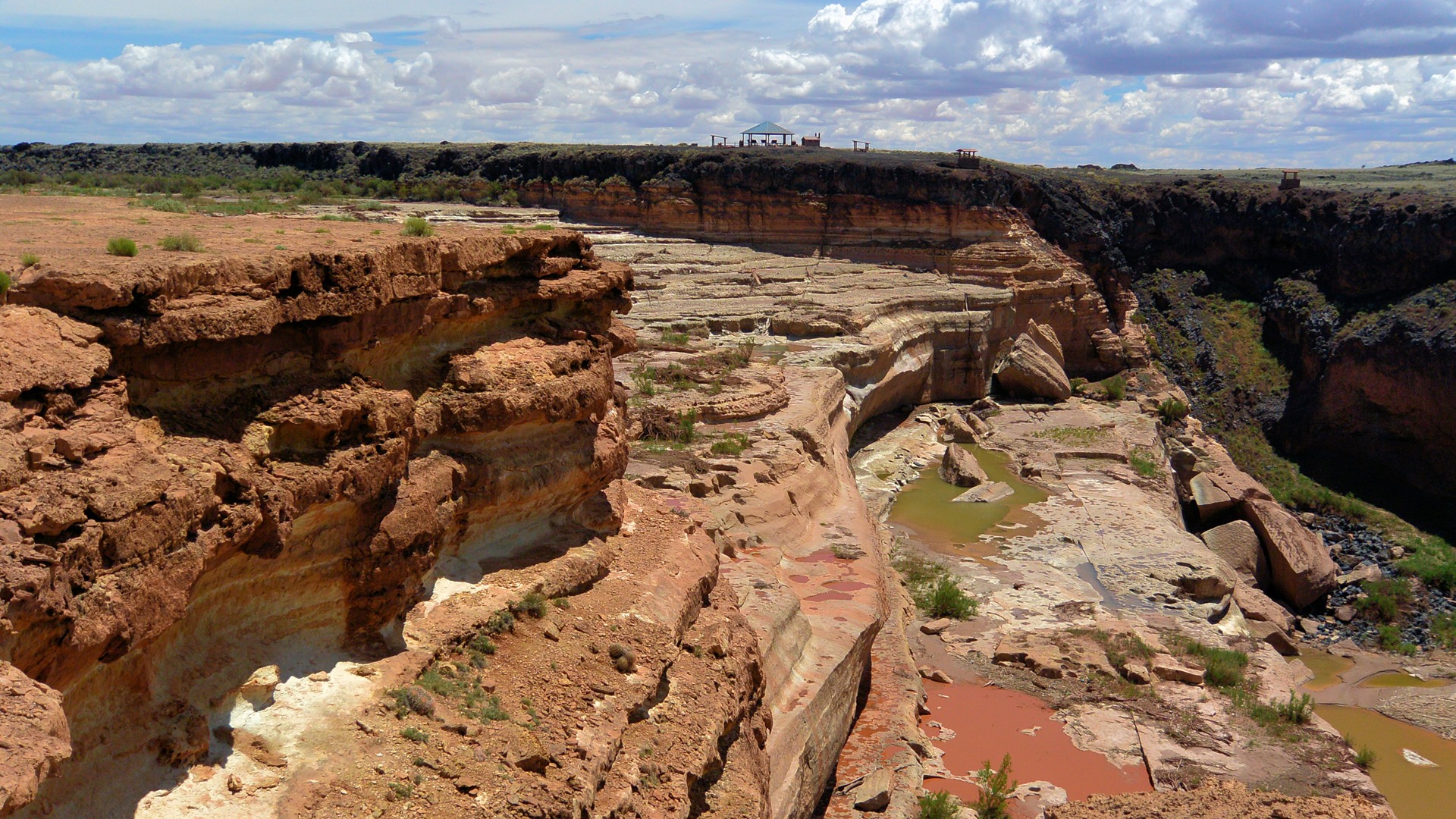
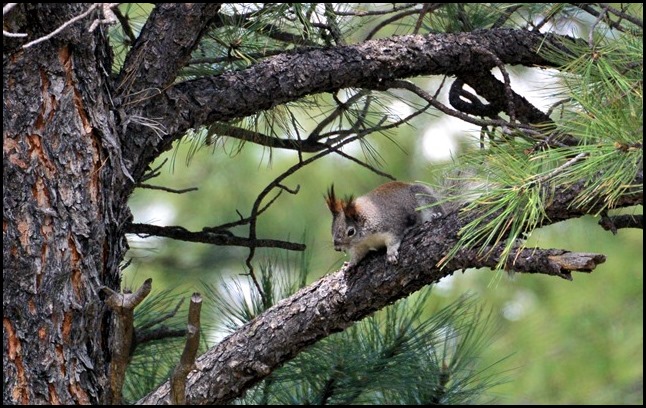
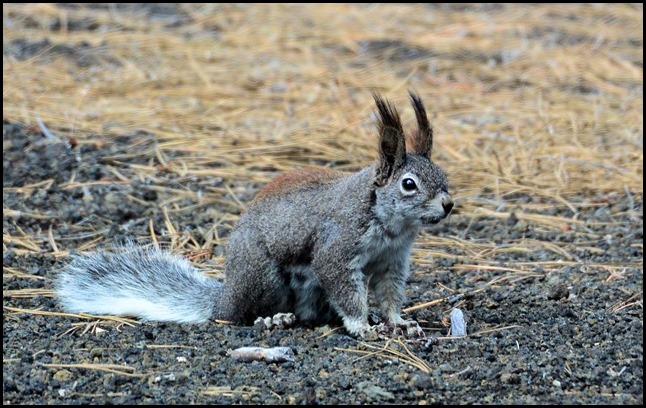
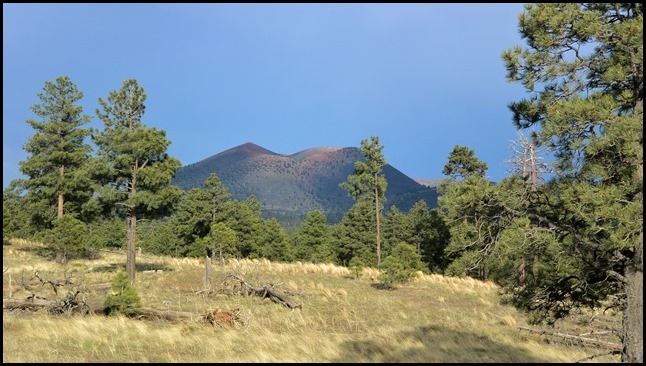
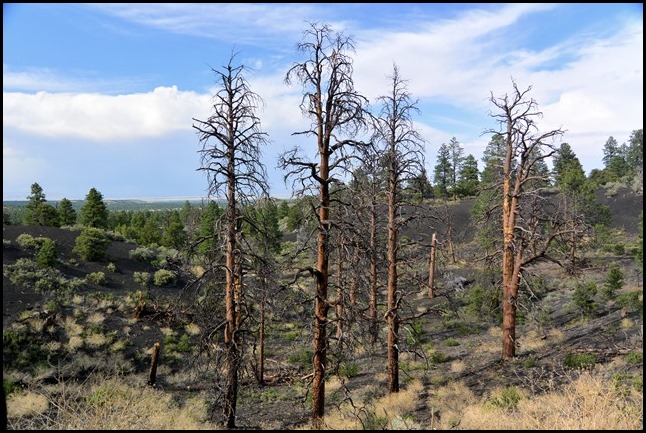
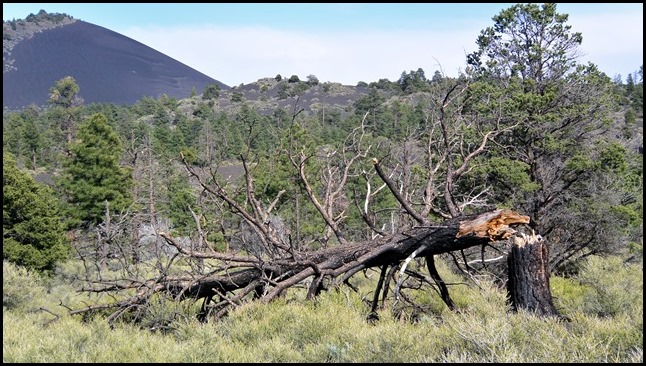
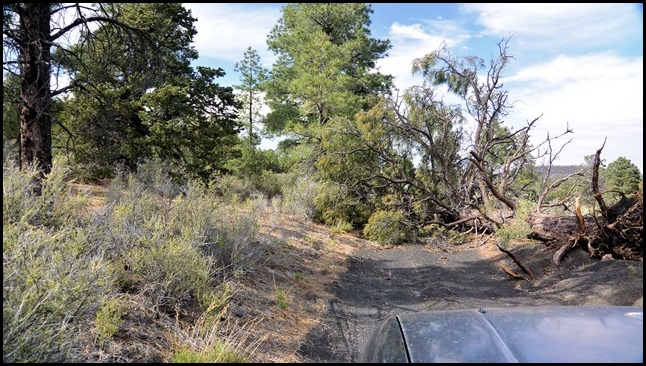
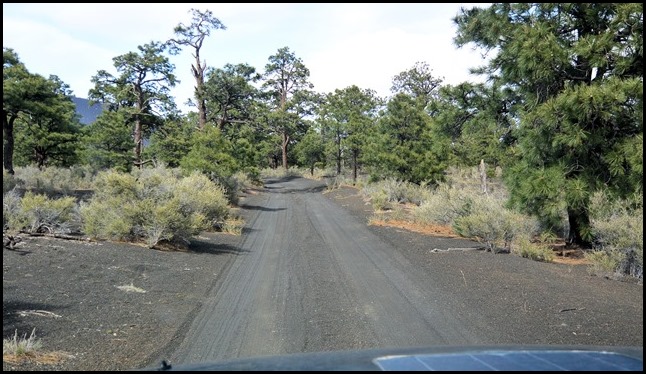
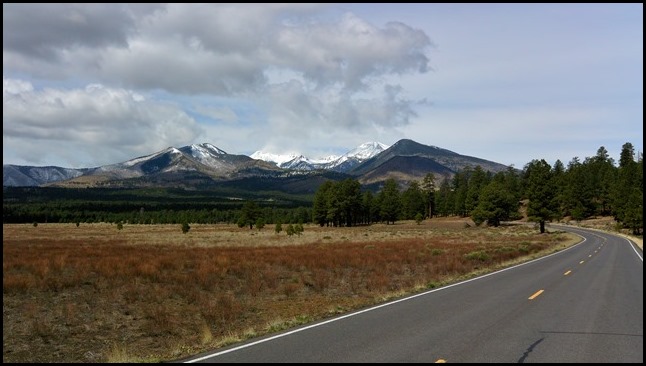
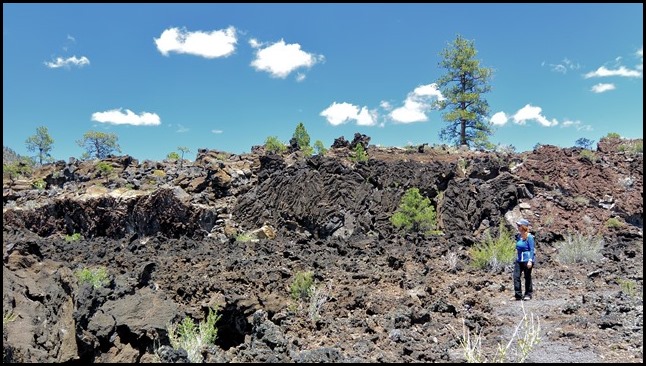
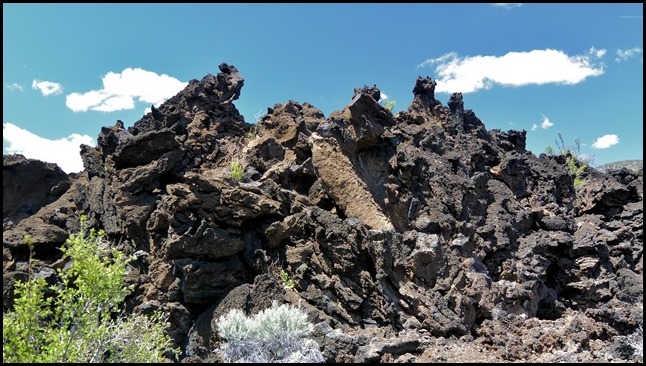
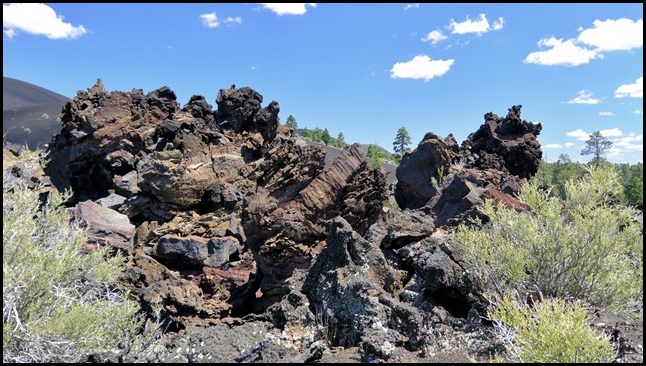
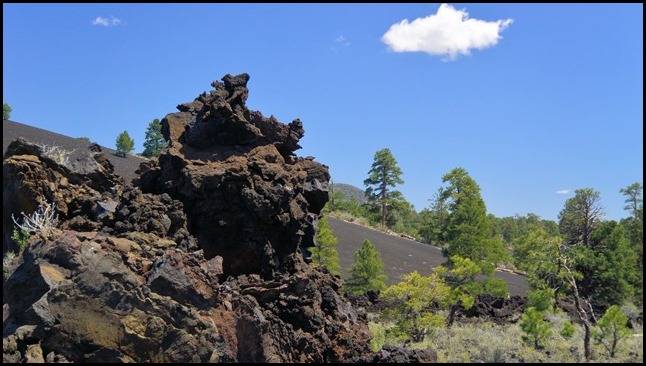
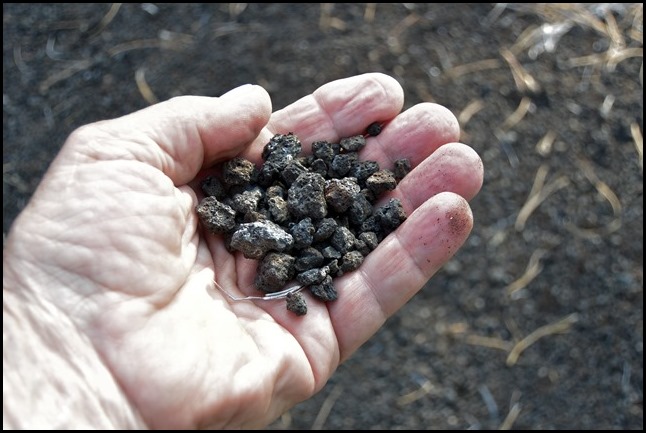
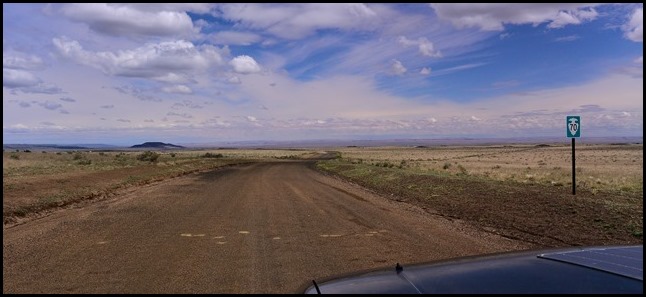
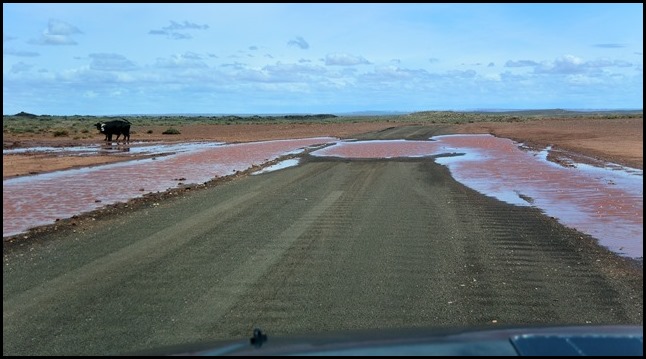
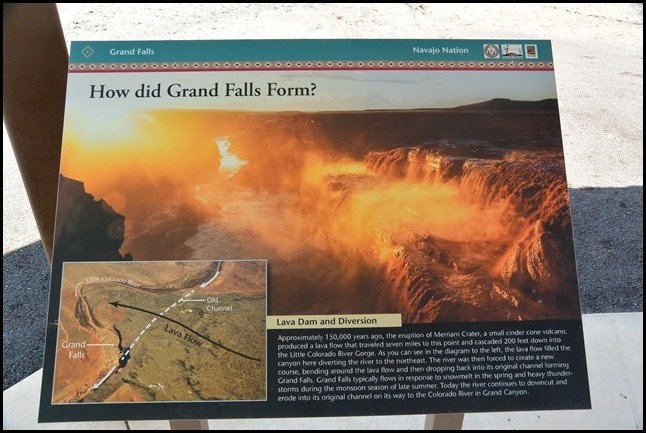
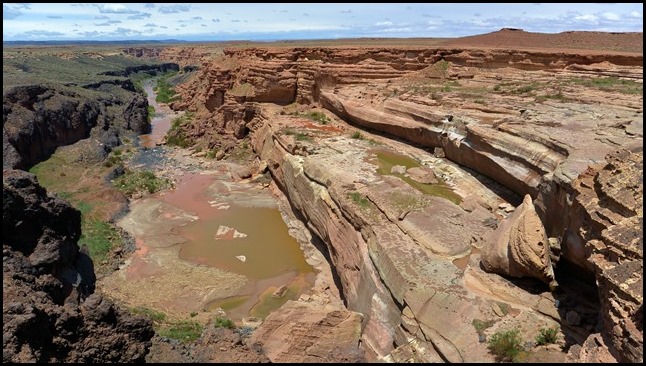
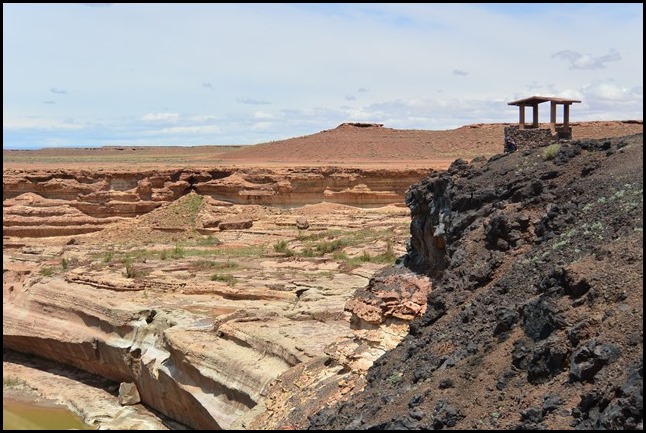
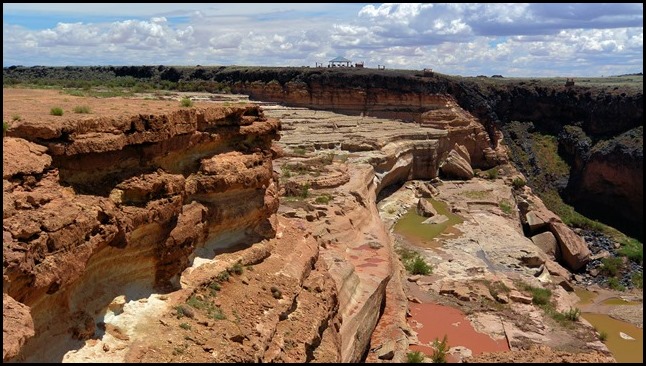
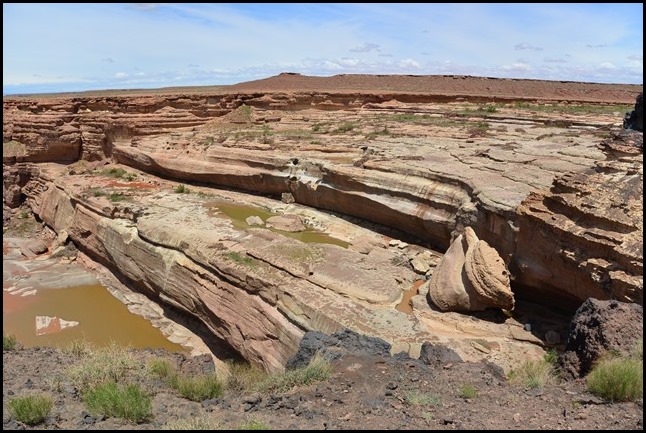
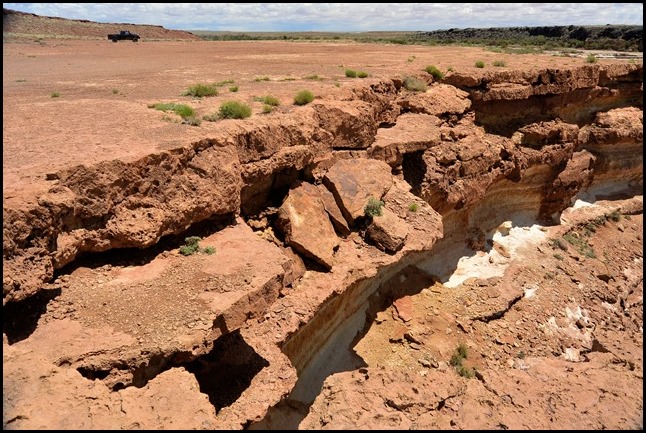
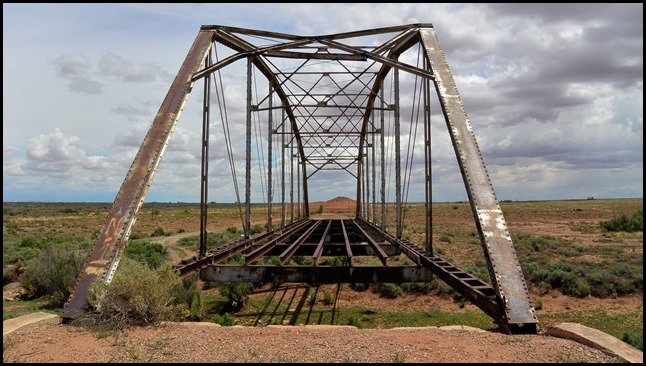
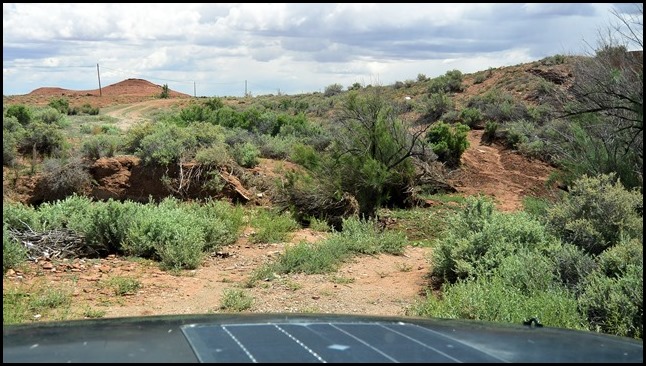
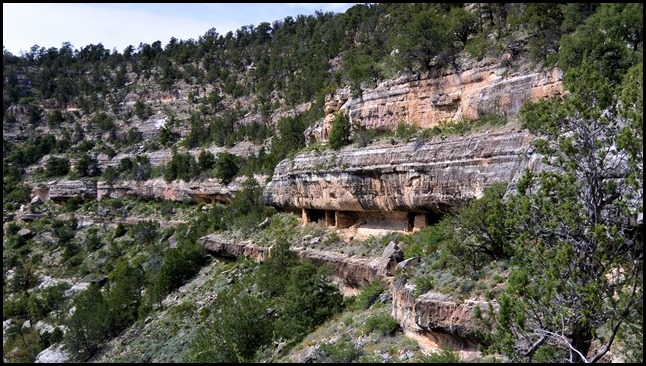
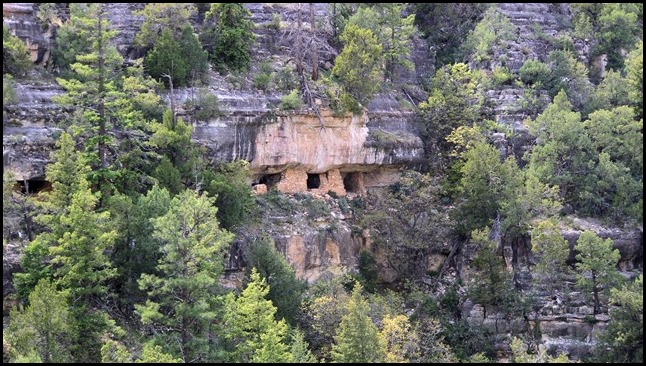
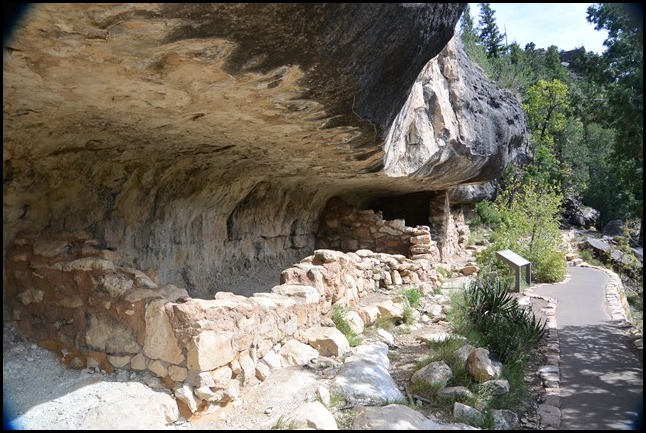
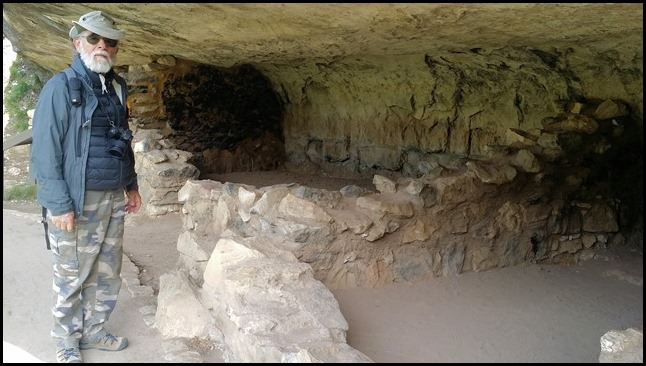
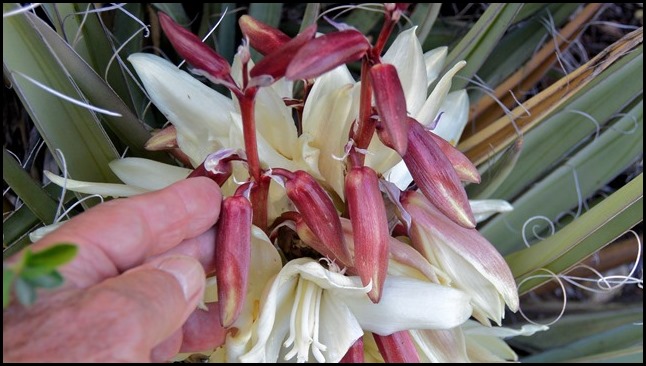
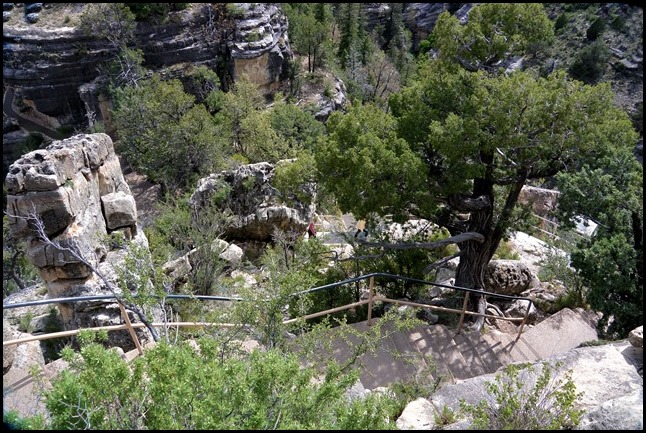
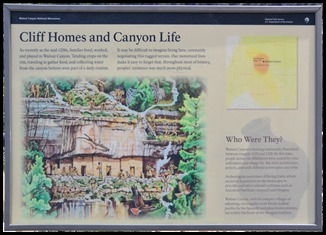
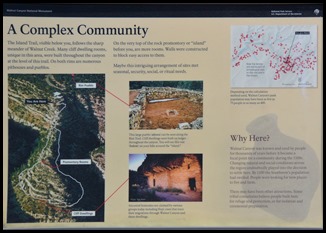
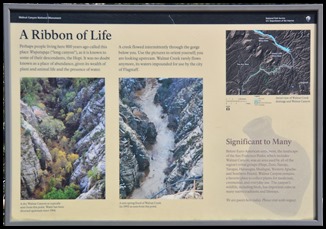
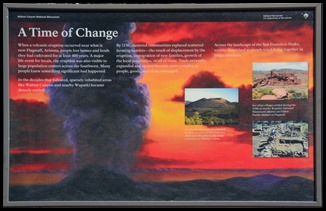
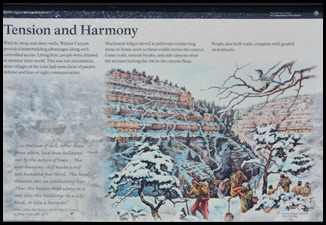
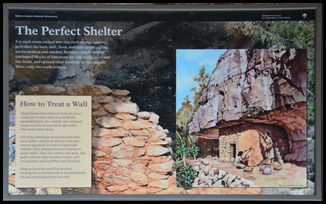
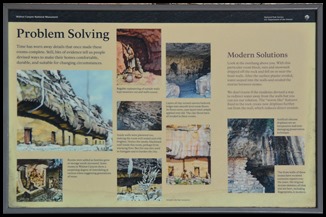
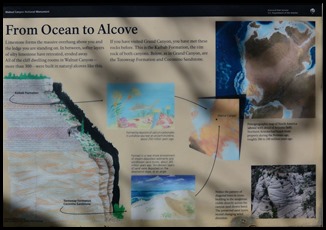
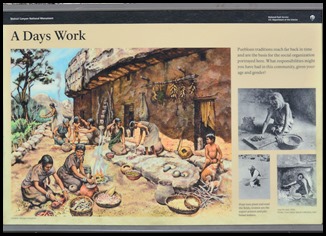
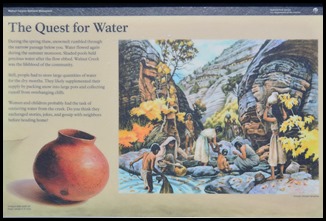
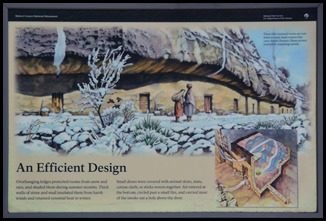
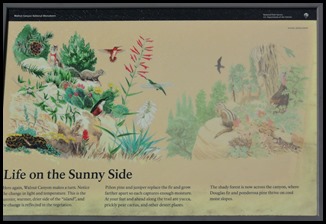
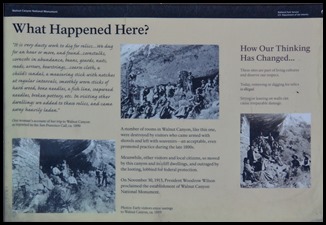
Very interesting. You find so many neat, out of the way places. Thanks for sharing.
Gerri,
We do try to find the Less traveled attractions. We like less crowds and more freedom. Thanks for reading,
G.
Nice post